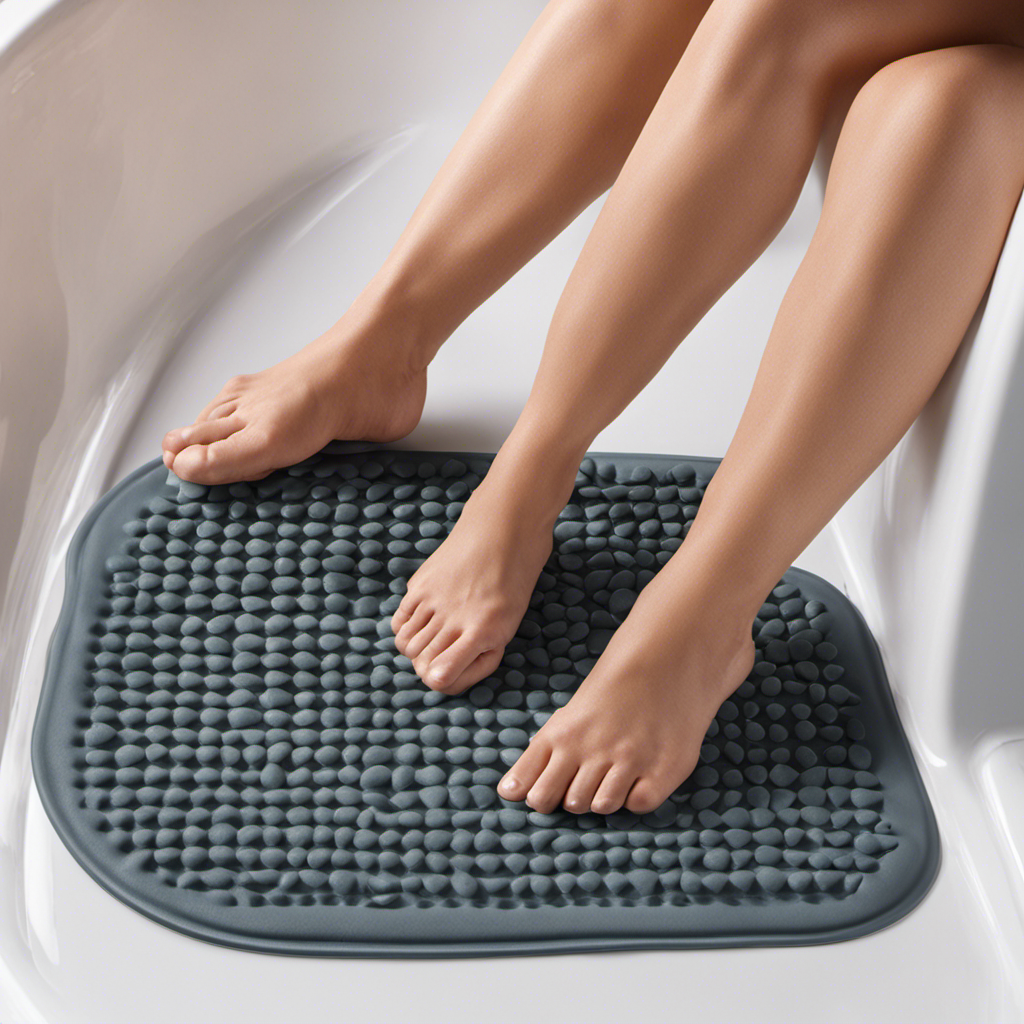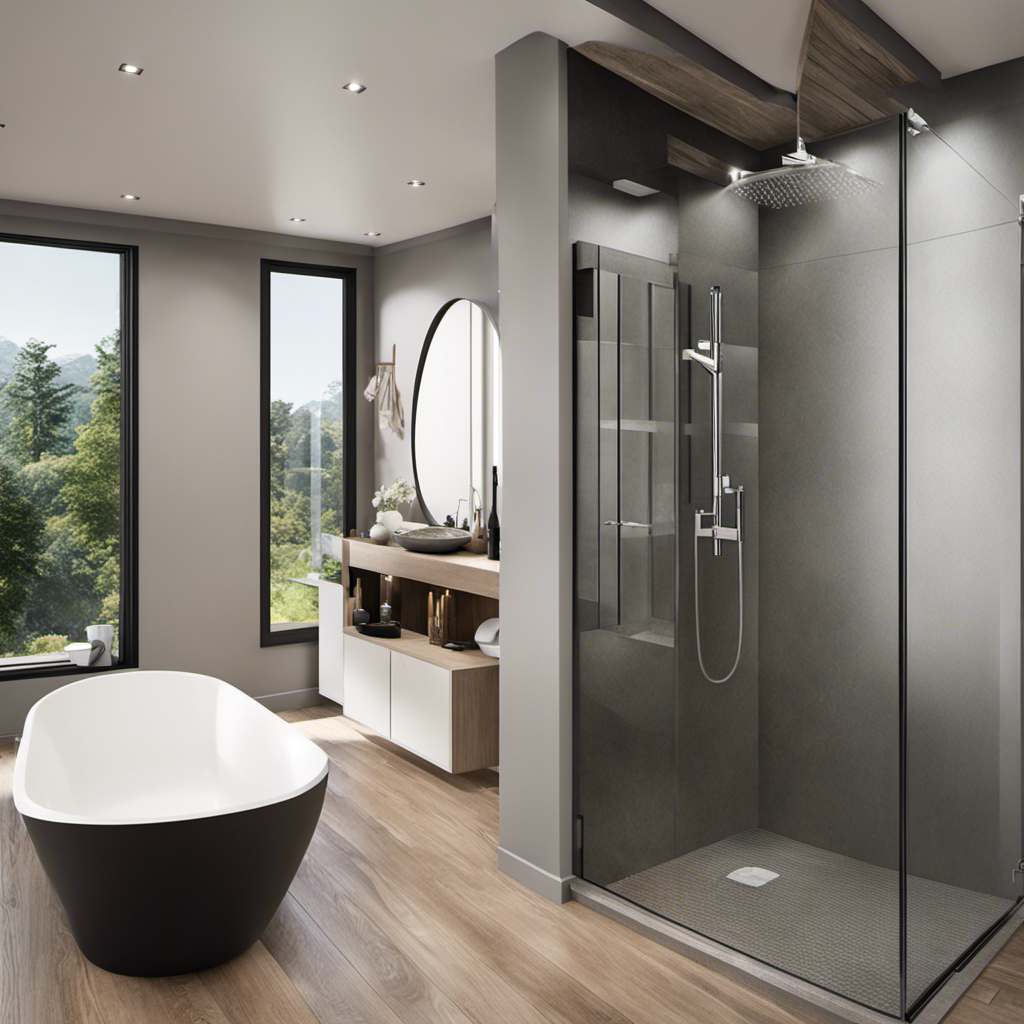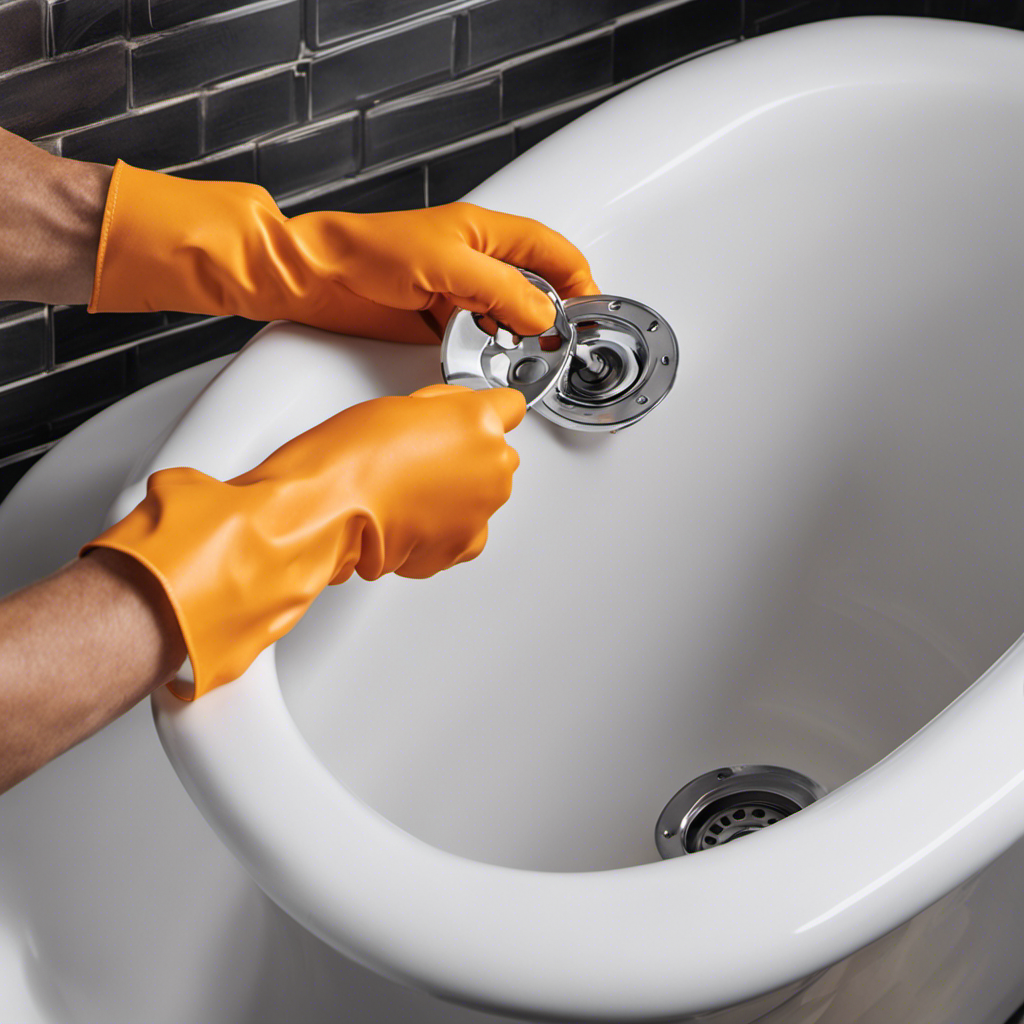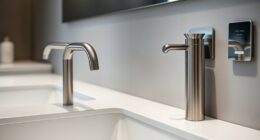Hey there, folks! Ever slipped in the bathtub and thought, ‘Wow, that was fun!’? Yeah, me neither. That’s why I’ve put together this handy guide on how to make your bathtub non-slip.
We all deserve a safe and worry-free bathing experience, right? In this article, we’ll dive into the importance of a non-slip bathtub, explore different solutions, and give you a step-by-step guide on applying non-slip coatings.
So, let’s get started and keep those slips at bay!
Key Takeaways
- Slip and fall accidents in the bathtub can lead to serious injuries, especially for older adults and individuals with mobility issues.
- Assess the safety needs of your bathtub by identifying potential hazards such as cracks, chips, uneven surfaces, or worn-out areas.
- Install grab bars or handrails near the tub and use non-slip mats or adhesive strips inside the tub to prevent accidents.
- Regularly maintain and update non-slip measures by inspecting and replacing mats or strips if necessary, applying a fresh coat of non-slip coating, and regularly cleaning the bathroom to remove soap scum or residue.
Understanding the Importance of a Non-Slip Bathtub
Understanding the importance of a non-slip bathtub is crucial for ensuring safety in the bathroom. Slip and fall accidents in the bathtub can lead to serious injuries, especially for older adults and individuals with mobility issues. That’s why it is essential to invest in bathtub safety products that can prevent such accidents.
Non-slip bathtub mats or stickers are effective solutions to create traction and reduce the risk of slips. These products are usually made of rubber or silicone and can be easily applied to the surface of the bathtub.
Additionally, installing grab bars near the bathtub can provide extra support and stability when getting in and out of the tub.
Assessing the Safety Needs of Your Bathtub
Assessing the safety requirements of your tub can help identify potential hazards and determine the necessary precautions. When evaluating bathtub materials, it’s important to consider their slip-resistant properties. Some materials, like porcelain or acrylic, may be naturally less slippery than others. Additionally, choosing the right non-slip products can make a significant difference in preventing accidents.
Here are two sub-lists to help you understand the safety needs of your bathtub:
-
Identifying potential hazards:
- Check for any cracks or chips in the tub surface that could cause trips or slips.
- Look for any uneven surfaces or worn-out areas that may lead to accidents.
-
Necessary precautions:
- Install grab bars or handrails near the tub to provide support while entering or exiting.
- Consider using non-slip mats or adhesive strips in the tub to enhance traction and prevent slipping.
Exploring Different Non-Slip Solutions for Bathtubs
To enhance the safety of your tub, consider trying out various non-slip solutions available in the market.
One option is to use shower mats, which provide a textured surface that helps prevent slips and falls. These mats are usually made of rubber or plastic and come in different sizes and designs to fit your bathtub. Simply place the mat on the bottom of the tub and it will create a secure and slip-resistant surface for you to stand on.
Another option is to use non-slip adhesives. These adhesives can be applied directly to the bathtub surface, creating a textured and grip-enhancing layer. They are easy to install and can be a cost-effective solution for making your bathtub safer.
Whether you choose shower mats or non-slip adhesives, these solutions can greatly reduce the risk of accidents in the bathroom.
Step-by-Step Guide to Applying Non-Slip Coatings
When applying non-slip coatings to your tub, start by thoroughly cleaning the surface to ensure proper adhesion. Here are some steps to guide you:
-
Choose the right non-slip product: Look for coatings specifically designed for bathtubs to ensure maximum durability and effectiveness. Consider the texture and grip level you desire. Some coatings offer a rougher surface for better traction.
-
Tips for cleaning non-slip coatings: Use a mild cleaner or a mixture of vinegar and water to gently remove any dirt or residue from the surface. Avoid using abrasive cleaners or scrub brushes, as they can damage the coating.
Maintaining and Updating Non-Slip Measures for Long-Term Safety
To ensure long-term safety, it’s important to regularly inspect and update your existing measures for preventing slips and falls in the bathroom.
Updating non-slip measures is essential in maintaining a safe environment. Start by checking the condition of your current non-slip mats or strips. Over time, they can become worn or lose their grip, so it’s crucial to replace them if needed.
Additionally, consider applying a fresh coat of non-slip coating to your bathtub or shower floor. This will enhance the effectiveness of the non-slip measures and provide better traction.
Don’t forget to clean the bathroom regularly to remove any soap scum or residue that could make surfaces slippery.
Conclusion
In conclusion, making your bathtub non-slip is a crucial step in ensuring your safety and preventing accidents. By assessing the safety needs of your bathtub and exploring different non-slip solutions, you can find the best option for your needs.
Applying non-slip coatings is a simple and effective way to create a safer bathing environment. Remember to maintain and update these measures regularly to ensure long-term safety.
Don’t underestimate the importance of a non-slip bathtub – it can truly be a lifesaver!










